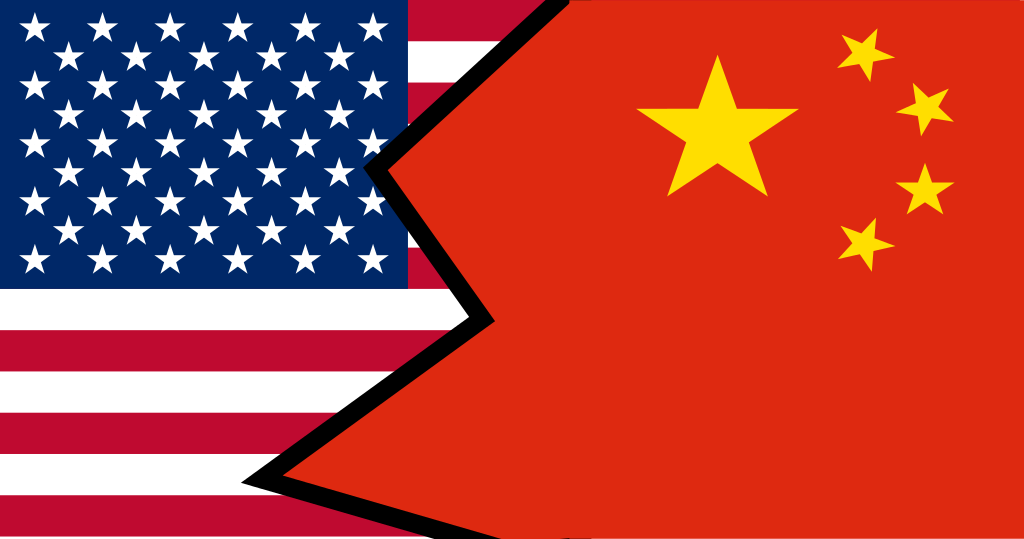
China-US relations have largely been stable since Donald Trump assumed office. Yet uncertainties always exist. The US side’s recent moves to mount pressure on China over the Korean nuclear issue, trade, Taiwan, and the South China Sea are aggressive and confrontational.
Following years of war on terror, the US identifies “major power competition” as the foremost US national security concern. The US openly defines China as a “strategic competitor”, “strategic rival”, and for the first time as a “revisionist state” that challenges US power, influence and interests, and seeks to erode US security and prosperity, accusing China of intending to reshape the world and sabotage the post-WWII international order from the inside. In a break from the past, when the US emphasized both cooperation and competition with China, the Trump administration is more preoccupied with competing with and containing China. Militarily, the Trump administration follows the principle of “seeking peace with might”, dramatically increasing military expenditure, and boosting military deployment in the West Pacific. An important goal is to balance China’s growing military strength and preserve US dominance in the region. The US is also enhancing its alliances in the area, with an eye to encircling China. Economically, the Trump administration emphasizes “fair and reciprocal trade”, promoting trade protectionism. It is upbraiding China over market access, the trade deficit, and intellectual property rights, launching investigations under Article 301 of the Trade Act of 1974, and asking for exorbitant prices from China. The two sides are on the brink of a trade war.
There are multiple reasons for the Trump administration’s increasing aggressiveness. With China’s rise, the structural contradictions between the two countries, their ideological differences and mutual suspicion have grown increasingly prominent, and strategic competition and rivalry have worsened. Some recent developments are worth particular attention. First, the US perception of China is undergoing significant changes, voices for getting tough with China are obviously gaining traction. Believing that the engagement policy followed by the past eight administrations have failed to fulfill US goals, some former government officials, prominent scholars openly advocate changing their approach to China. China’s attempts to promote cooperation of “BRICS” nations, the “Belt and Road” initiative, and organize the AIIB have prompted misgivings that China is seeking to undermine US dominance. Second, forces previously conducive to the healthy development of China-US relations are increasingly silent. The American business community, which used to be in favor of engaging China, complains about the continuously deteriorating business environment in China, and now supports US government efforts to mount pressure on Beijing. Third, frequent personnel changes inside the Trump administration brought in many favoring tougher China policies. Fourth, the Republicans are traditionally preoccupied with national security, and tough foreign policies, which is in tune with the Trump administration’s ideas of “America First”, and “seeking peace with might”. Fifth, domestic political factors affect the Trump government’s words and deeds regarding China. This year’s mid-term elections are of critical importance to Trump, so he needs to act tough against China to please his constituency.
In line with the Trump administrations’s words and deeds clamoring for containing China, risks of China-US strategic competition and confrontation have increased. The worst-case scenario is bilateral ties continue deteriorating, and the two countries enter confrontation. In both countries there has been talk of a “new Cold War” between China and the US, some even assume the two have already entered the “Thucydides Trap”. Once the US side ignores China’s core interests, and touches its red lines on Taiwan, and South China Sea, the risk of collision will rise substantially.
China-US relations stand at a crossroads. Both should be calm and cautious. The Trump administration’s adjustments in its China policies still face restrictions and challenges. After 40 years of reform and opening up, Chinese national strength has risen greatly, its ability to influence and shape bilateral ties has risen accordingly. Even if the US intends to contain China, it can hardly do it single-handedly. Not to mention the Trump administration’s “America First” and unilateralist policies have ended up eroding US soft power. Despite constant friction, China-US interdependence continues deepening, and positive energy for promoting bilateral ties has not disappeared completely. Trump is more focused on short-term gains and domestic political considerations, and doesn’t necessarily have long-term strategic plans. Currently both sides are fixated on domestic topics, and their diplomacy serves domestic needs. Further observation is needed to determine whether or not the Trump administration’s China strategy has turned completely toward tough containment. The best strategic option now is certainly to prepare for the worst and strive for the best outcomes.

